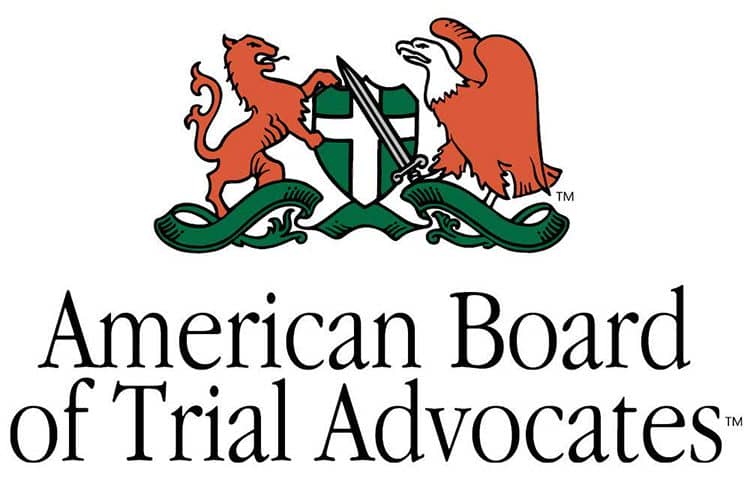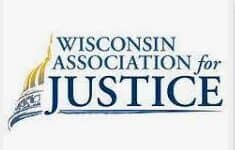By Attorney Lynn R. Laufenberg
The following commentary was prepared for the Litigation Section for the State Bar of Wisconsin. Mr. Laufenberg is a member and immediate past Chair of the Board of the Litigation Section.
In the wake of three recent Supreme Court decisions, Wisconsin medical, business and insurance interests have embarked upon a public relations campaign decrying the allegedly negative impact these decisions will have on Wisconsin’s business and medical climate. The underpinnings of this campaign are represented by a White Paper distributed by Wisconsin Coalition of Civil Justice, an amalgam of insurance and business organizations, entitled “Wisconsin Civil Justice System – A State of Crisis.” To a great extent, the paper is a re-hash of the asserted basis for a long standing “tort reform” agenda advanced by Wisconsin Manufactures and Commerce. Two of the items on this agenda – caps on non economic damages in medical malpractice cases and a statutory standard for the award of punitive damages – were successfully enacted and were the subject of recent Supreme Court analysis. Other items on the agenda include:
- Significant statutory modifications to the common law of product liability.
- Legislative adoption of the Daubert standard for the admission of expert testimony – Limitations on shareholder and director liability
- Elimination of the 15% limit on reduction of damages for failure to wear a seat belt
- A variety of exemptions and immunities from suit for certain industries and activities
Consistent with longstanding State Bar Policy Positions, the Section has actively lobbied against these and other measures which afford protection from suit to special interests, undermine the development of the common law and limit access to the civil justice system. As stated in the State Bar’s policy position on Civil Practice and Procedure:
The overarching principal in (Article I, Sec. 9 of the Wisconsin Constitution) is best served in today’s legal system by a court of law and the gradual evolution of legal principles by a case by case method of legal rule making and not by statutory fiat. Predetermined legislative limits and special exceptions to the gradual development of the common law should be rare. Determining each case on its own merits rather than through a prescribed formula or directive is the best means to protect citizens’ constitutional rights to remedy for all injuries and wrongs. The historic position of the State Bar of Wisconsin is that the judicial branch of government is a co-equal branch.
The Court’s historic role in the development of remedies for injuries and wrongs should be preserved and protected from the pressures of special interests, lobbyists, or those who seek to influence the development of law for their short-sighted benefit. Remedies are best defined by the careful, thoughtful application of historical traditions of the common law on a case by case basis.
As reflected by the noted examples, these positions have not always prevailed in the legislative process. Given the Constitutional underpinnings of these arguments, it is not surprising that the resulting legislation would be the subject of court challenge and interpretation. The most recent results of this time-honored and constitutionally authorized process have prompted the renewed cries of “crisis.”
What should be alarming to all who support the independence of the judiciary is the very direct challenge to that independence contained within the recent crisis rhetoric. A few examples from the White Paper illustrate the point. Addressing the Ferdon decision (holding that the cap on non economic damages in medical malpractice cases is unconstitutional), the authors assert:
This case represents either a blatant attempt by the Court’s majority to legislate, or a fundamental lack of understanding of the legislative process – or, probably, both.
Expressing regret about the results in the Thomas (dealing with liability of producers of white lead carbonate used in residential paint) and Strenke (construing the statutory punitive damage requirements), the authors state:
These cases raise concern beyond the examination of methods and rationale of the state’s highest court.
The authors leave no doubt of their diagnosis concerning the cause and remedy for these alleged judicial excesses:
The most troubling problem, but also the most difficult to remedy, is the Court’s interference with the legislature’s prerogative to assess and address important policy issues such as medical malpractice costs.
… in light of the sweeping scope of the Ferdon decision, it could be argued that nothing short of a constitutional amendment may not bring balance back to our legal system.
Commentators sometime raise the specter of the “power of the purse” as a valid means for the legislature to rein in courts that have overplayed their authority…
There are numerous options relating to amending the constitution to address the recent judicial acitivism of the Supreme Court.
A constitutional amendment to address Ferdon might clarify the appropriate standard of review (i.e., rational basis without teeth) and the methodology of review (e.g., the court shall use only those documents prescribed, such as legislative drafting instructions).
That such assertions and proposals strike at the heart of an independent judiciary was recognized by the Ohio Supreme Court when, in 1999, it struck down sweeping legislation advanced by insurance and business interests, much of which revived laws which the Court had already declared invalid:
The General Assembly has circumvented our mandates, while attempting to establish itself as the final arbiter of the validity of its own legislation. It has boldly seized the power of constitutional adjudication, appropriated the authority to establish rules of court and overrule judicial declarations of unconstitutionality, and, under the thinly veiled guise of declaring “public policy,” establishing “jurisdiction” and enacting “substantive” law, forbade the courts the province of judicial review.
Such a threat to judicial independence is reminiscent of a bygone era of legislative omnipotence existing prior to the adoption of the Constitution of 1851.
State ex rel. Ohio Academy of Trial Lawyers v. Sheward, 715 N.E.2d 1062 (1999). Following this decision, the Ohio Chamber of Commerce, with assistance from the U.S. Chamber of Commerce, spent millions trying (unsuccessfully) to oust Ohio Supreme Court Justice Alice Robie Resnick. However, the final chapter has yet to be written in Ohio where the legislature early this year re-enacted much of the invalidated legislation. Two of the Supreme Court majority in Sheward have since retired and have been replaced by appointees whom the advocates of legislative supremacy believe will support their view of the constitutional division of authority.
What can and should lawyers, including trial lawyers, do in response to this threat to judicial independence? It might be helpful, at the outset, to remember the oath we took when admitted to the bar to support the constitution of the state of Wisconsin which establishes an independent judiciary as a co- equal branch of government. Without regard to the interests and desires of a particular client or our view of the merits of the arguments in an individual case, can we sit idly by while the integrity of the judiciary and the civil justice system is challenged or destroyed?
Perhaps active participation in the public debate generated by rhetoric of the type noted above is a particularly appropriate role for litigators. Responding to attacks on the federal judiciary earlier this year, the American Bar Association adopted the following Message Platform:
Central Message: An independent judiciary free from political pressure is essential to the separation of powers that makes our democracy work.
Planks: Judicial independence ensures that our system of checks and balances prevents one branch of government from dominating the others and protects the rights of each of us. Americans have a right and duty to express disagreement with judicial decisions, but not to threaten retaliation against judges. Recent political rhetoric has crossed the line from healthy debate to attempted intimidation of judges.
The ABA’s website includes information and resources which those who support the independence of the judiciary, the integrity of the common law and the value of the civil justice system can use to formulate a response to those who attempt to demonize individual judges and reduce the judicial branch to a rubber stamp for legislative action.




